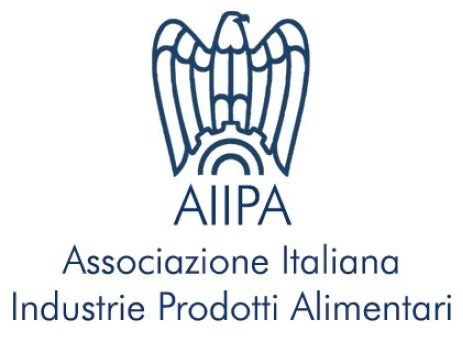- Ginsberg G. et al. Incorporating pharmacokinetics difference between children and adults in assessing children’s risk to environmental toxicants. Toxicol Appl Pharmacol. 2004, 15;198 (2):164-83.
- U.S. EPA. Child-Specific Exposure Factors Handbook (FinalReport) 2008. U.S. Environmental Protection Agency, Washington, DC, EPA/600/R-06/096F, 2008.
- Godfrey KM, Barker DJ: Fetal nutrition and adult disease. Am J Clin Nutr. 2000 May;71(5 Suppl):1344S-52S.
- Owen CG et al: Effect of infant feeding on the risk of obesity across the life course: a quantitative review of published evidence. Pediatrics. 2005; 115(5):1367-77.
- Alimentazione in età pediatrica: l’esperienza della scuola di nutrizione. Società Italiana di Nutrizione Pediatrica SINUPE. Ministero della Salute. Società Italiana di Pediatria SIP. Federazione Italina Medici Pediatri FIMP. 2011
- G.V. Zuccotti et al Nutrient Intake in Italian Infant sand Toddlers from North and South Italy: The Nutrintake 636 Study. Nutrients 2014, 6(8), 3169-3186;
- Direttiva 2006/125/CE del 5 dicembre 2006. Direttiva della Commissione del 5 dicembre 2006 sugli alimenti a base di cereali e gli altri alimenti destinati ai lattanti e ai bambini. (pubbl. in Gazz. Uff. dell’Unione europea n. L 339 del 6 dicembre 2006).
- D.P.R. 7 aprile 1999, n. 128. Regolamento recante norme per l’attuazione delle direttive 96/5/CE e 98/36/CE sugli alimenti a base di cereali e altri alimenti destinati a lattanti e a bambini. (pubbl. in Gazz. Uff. n. 109 del 12 maggio 1999).
- Nota del Ministero della Salute del 5 luglio 2106. Indicazione per gli adempimenti dei cosiddetti "latti di crescita" e dei prodotti dietetici per sportivi conseguenti all'abrogazione del settore dei prodotti destinati ad una alimentazione con l'applicazione del Regolamento (UE) 609/2013 del 20 luglio 2016.
- Regolamento CE 1333/2008 relativo agli additivi alimentari
- Regolamento CE 1881/2006 che definisce i tenori massimi di alcuni contaminanti nei prodotti alimentari.
- ESPGHAN Committee on Nutrition Breast-feeding: A Commentary by the ESPGHAN Committee on Nutrition Journal of Pediatric Gastroenterology and Nutrition 49:112–125 2009.
- World Health Organization. The optimal duration of exclusive breastfeeding. Report of an Expert Consultation. Geneva, Switzerland: World Health Organization, 2001.
- ESPGHAN Committee on Nutrition. Complementary Feeding: A Commentary by the ESPGHAN Committee on Nutrition. J. Pediatr. Gastroenterol. Nutr. 2008; 46: 99-110.
- .Unicef/ OMS Codice internazionale sulla commercializzazione dei sostituti del latte materno. 1981
- INRAN Linee Guida di sana alimentazione 2003
- Kearns GL, Abdel-Rahman SM, Alander SW, Blowey DL, Leeder JS, Kauffman RE. Developmental pharmacology--drug disposition, action, and therapy in infants and children. N Engl J Med. 2003 Sep 18;349(12):1157- 67.
- Mennella JA1, Trabulsi JC. Complementary foods and flavor experiences: setting the foundation. Ann Nutr Metab. 2012;60 Suppl 2:40- 50. doi: 10.1159/000335337.
- Möller LM1, de Hoog ML1, van Eijsden M2, Gemke RJ3, Vrijkotte TG1. Infant nutrition in relation to eating behaviour and fruit and vegetable intake at age 5 years. Br J Nutr. 2013 Feb 14;109(3):564-71. doi: 1017/S0007114512001237.
- Selevan SG1, Kimmel CA, Mendola P. Identifying critical windows of exposure for children's health. Environ Health Perspect. 2000 Jun;108 Suppl 3:451-5.
- Fewtrell MS. Can Optimal Complementary Feeding Improve Later Health and Development? Nestle Nutr Inst Workshop Ser. 2016;85:113-23. doi: 10.1159/000439501.
- Voortman T1,2, Braun KV2, Kiefte-de Jong JC2,3, Jaddoe VW1,2,4, Franco OH2, van den Hooven EH2. Protein intake in early childhood and body composition at the age of 6 years: The Generation R Study. Int J Obes (Lond). 2016 Feb 15. doi: 10.1038/ijo.2016.29.
- Blake-Lamb TL1, Locks LM2, Perkins ME3, Woo Baidal JA4, Cheng ER3, Taveras EM5. Interventions for Childhood Obesity in the First 1,000 Days A Systematic Review. Am J Prev Med. 2016 Feb 8. pii: S0749-3797(15)00750-3. doi: 10.1016/j.amepre.2015.11.010.
- Pearce J1, Langley-Evans SC. The types of food introduced during complementary feeding and risk of childhood obesity: a systematic review. Int J Obes (Lond). 2013 Apr;37(4):477-85. doi: 10.1038/ijo.2013.8.
- Voortman T1, van den Hooven EH, Tielemans MJ, Hofman A, Kiefte- de Jong JC, Jaddoe VW, Franco OH. Protein intake in early childhood and cardiometabolic health at school age: the Generation R Study. Eur J Nutr. 2015 Sep
- Corretta alimentazione ed educazione nutrizionale nella prima infanzia - F.A.Q: Ministero della Salute
- References: Scientific Opinion on nutrient requirements and dietary intakes of infants and young children in the European Union EFSA Journal 2013;11(10):3408 [103 pp.].
- Scientific Opinion on Dietary Reference Values for iron EFSA Journal 2015;13(10):4254 [115 pp.].
